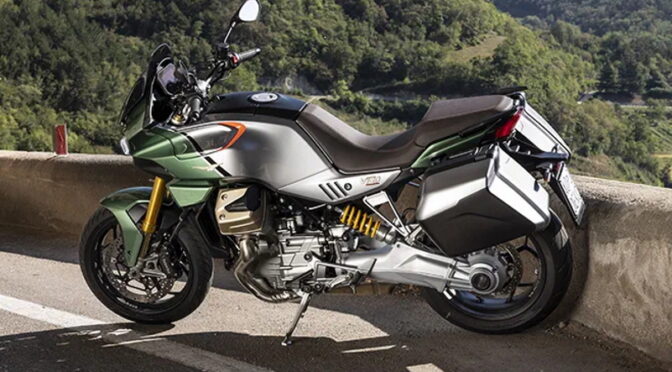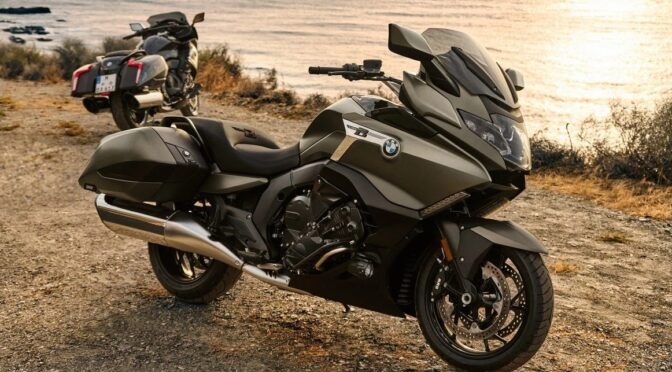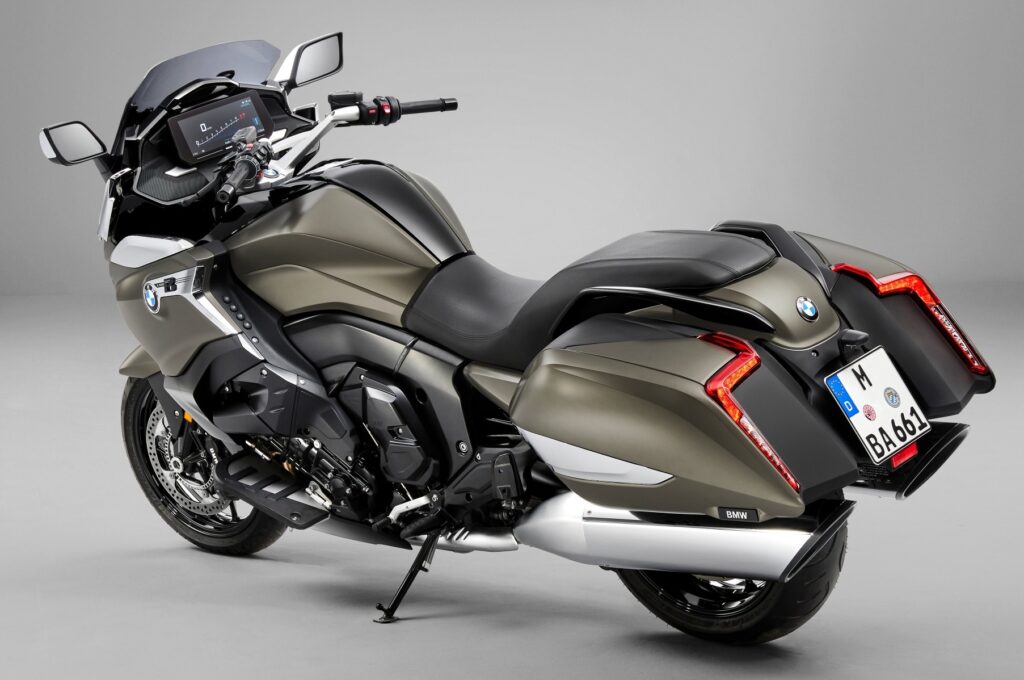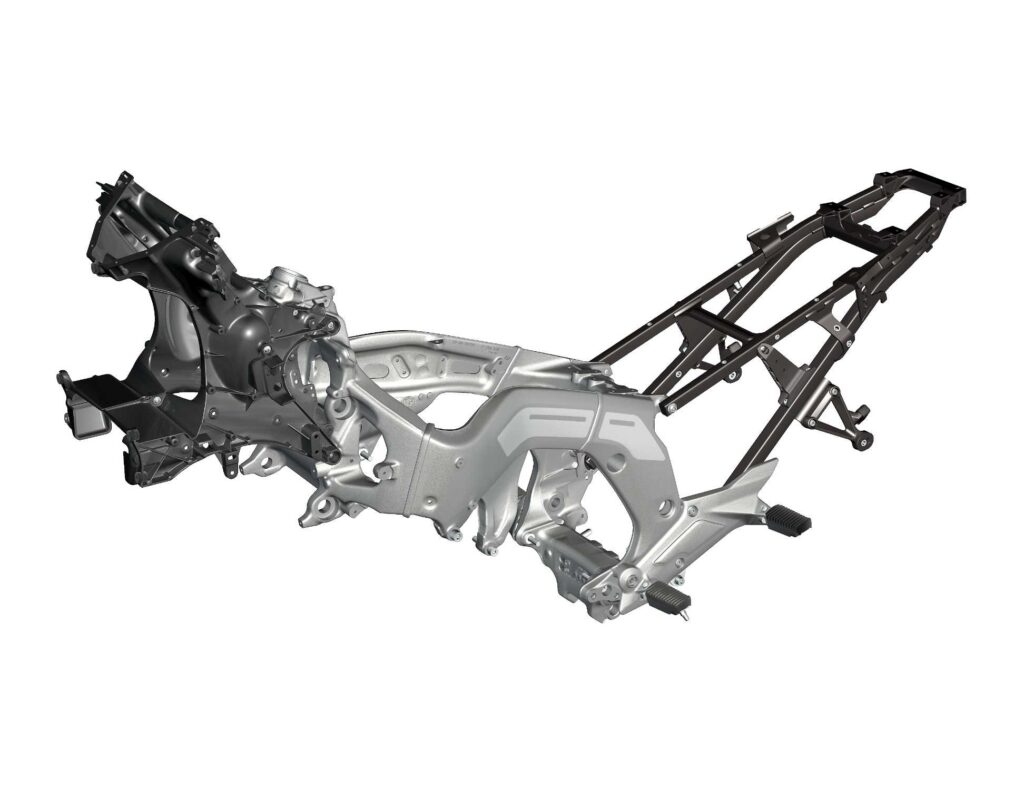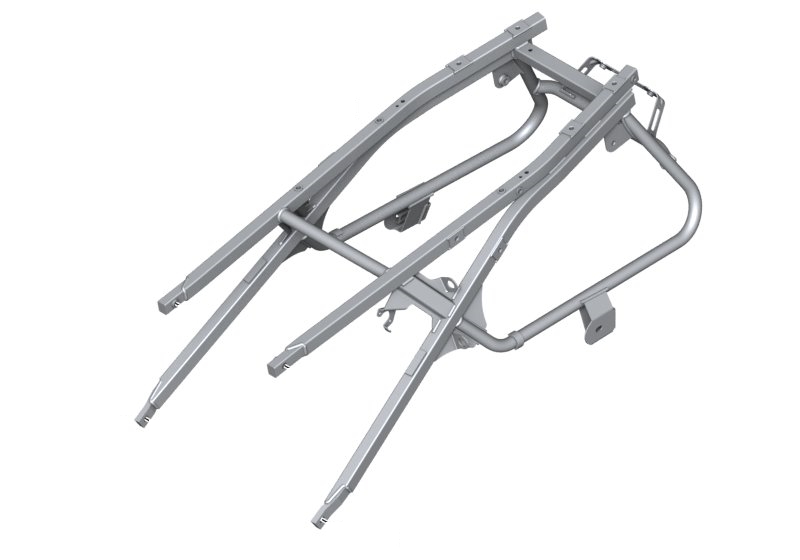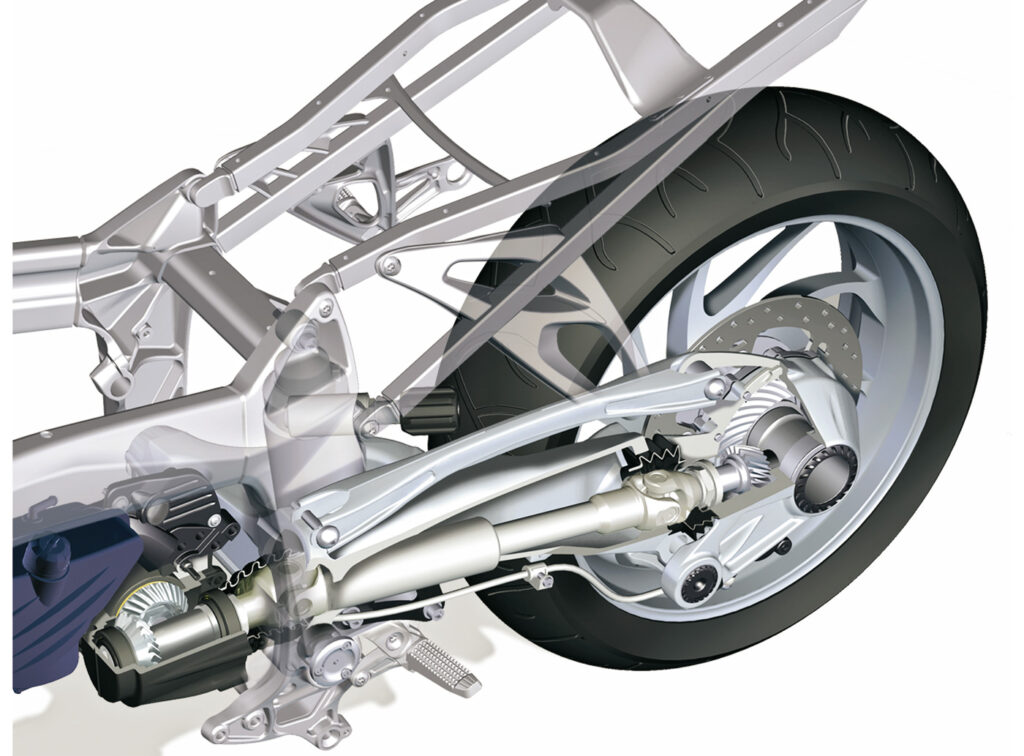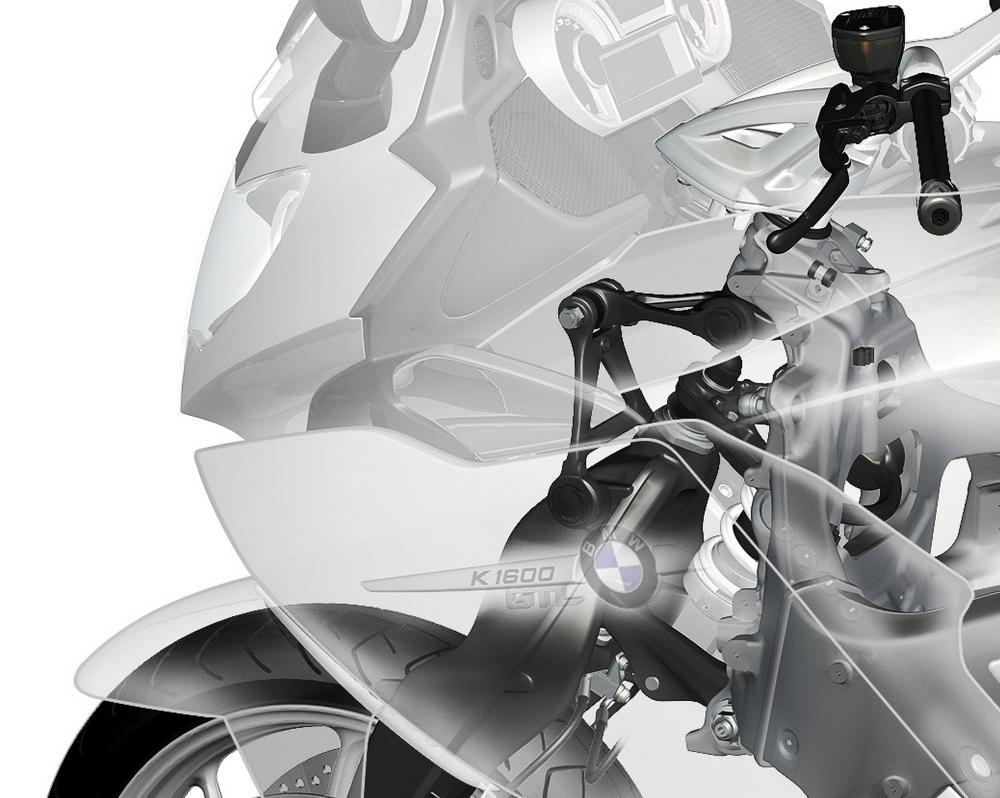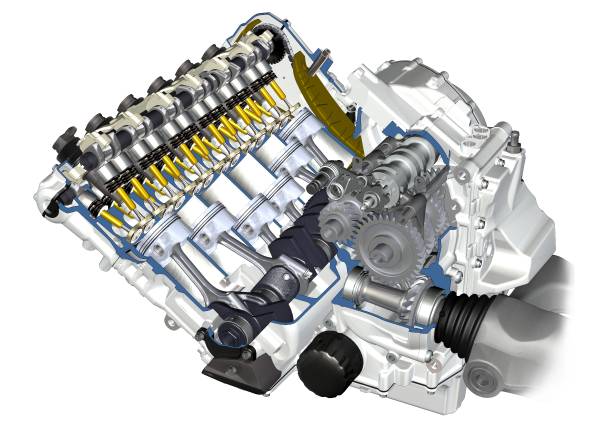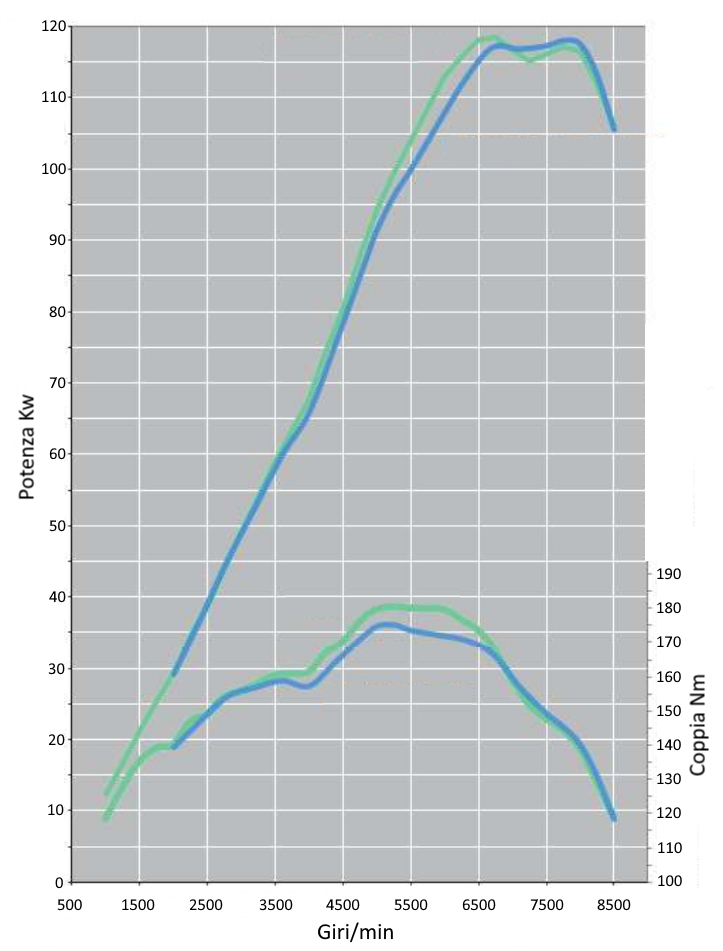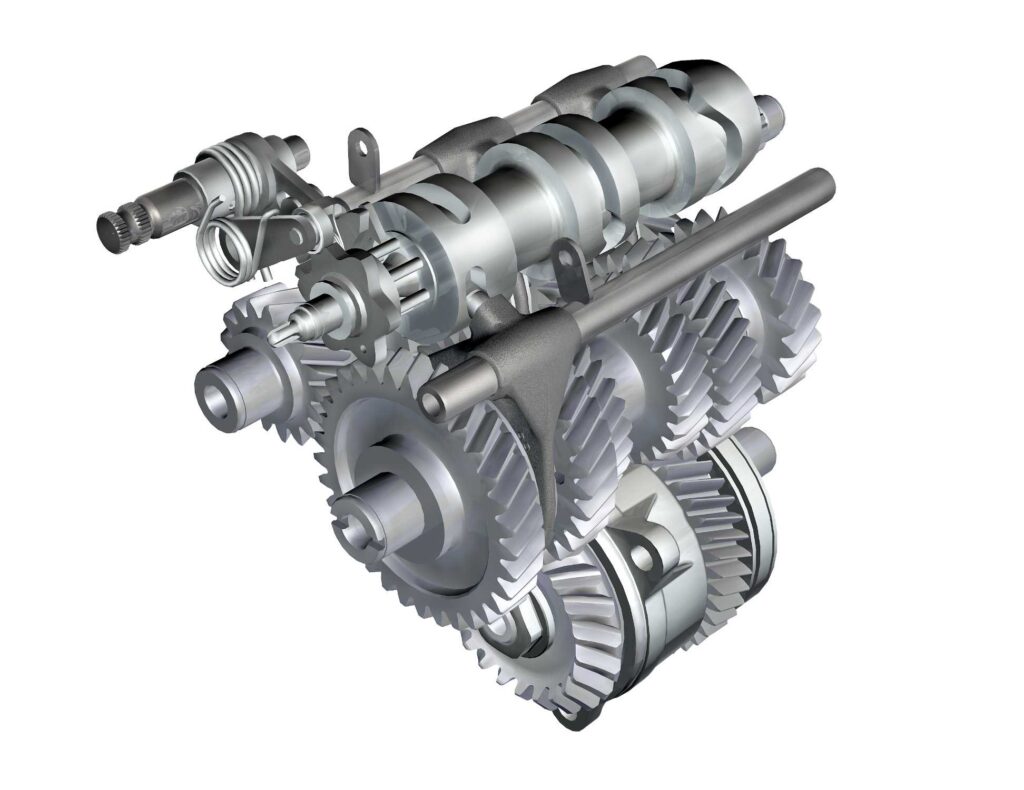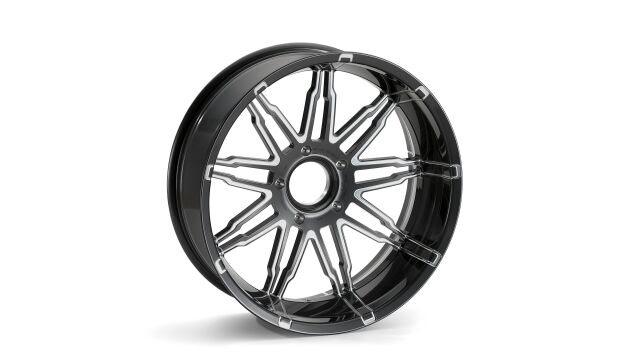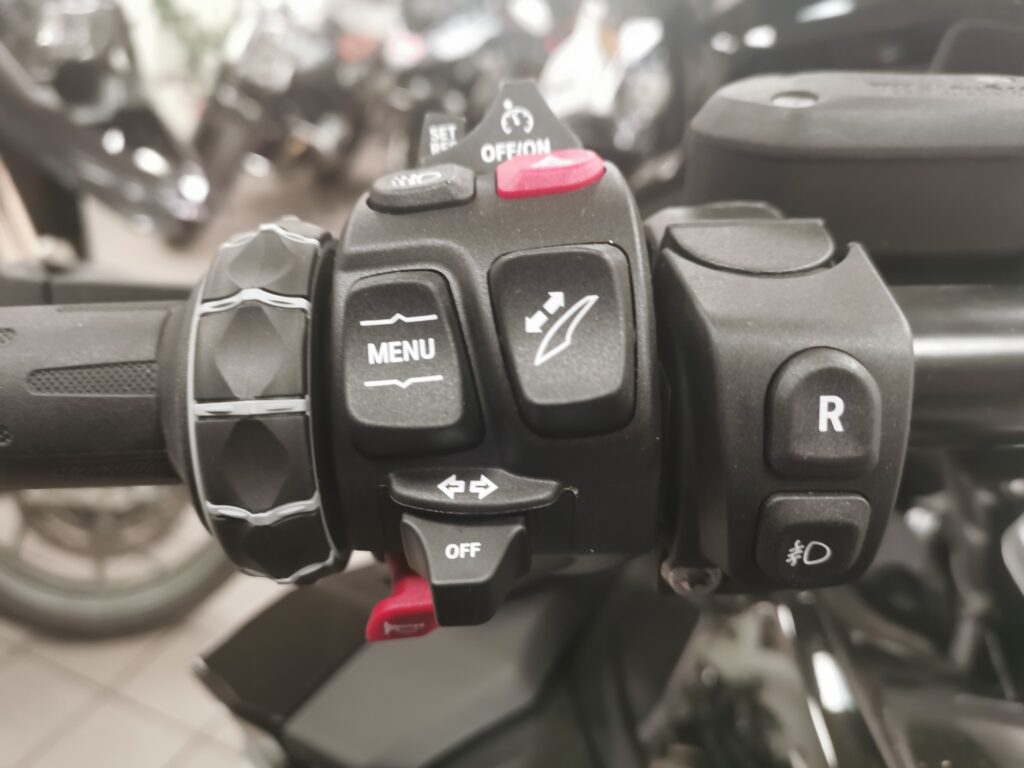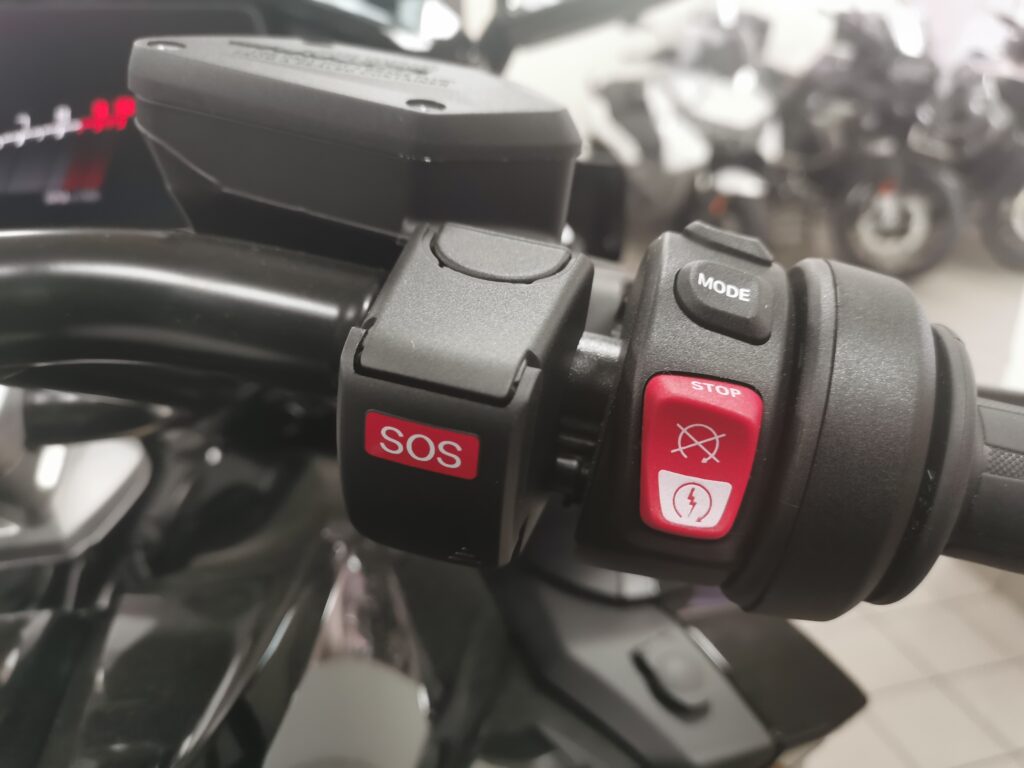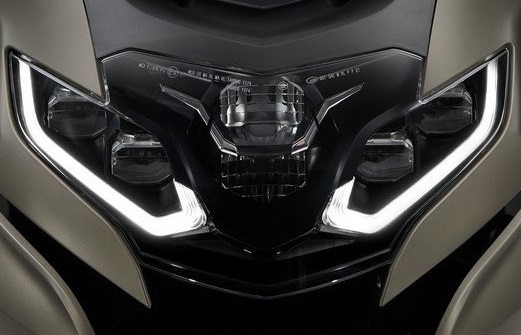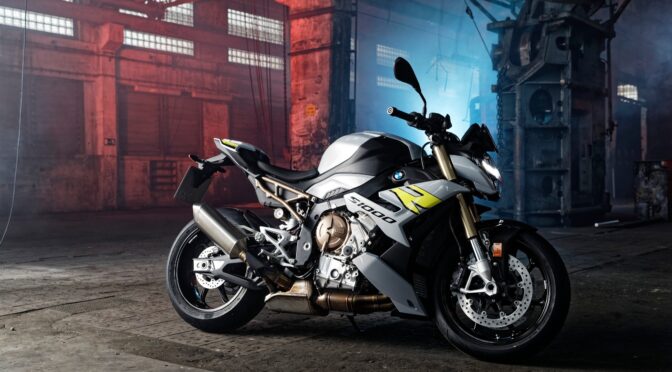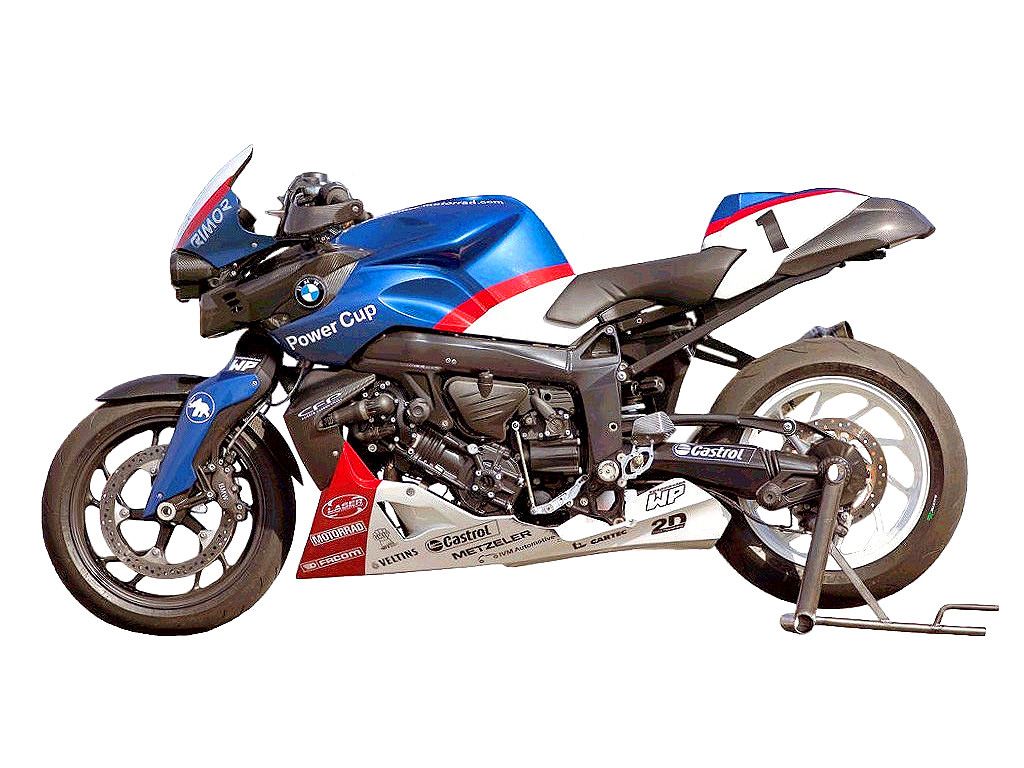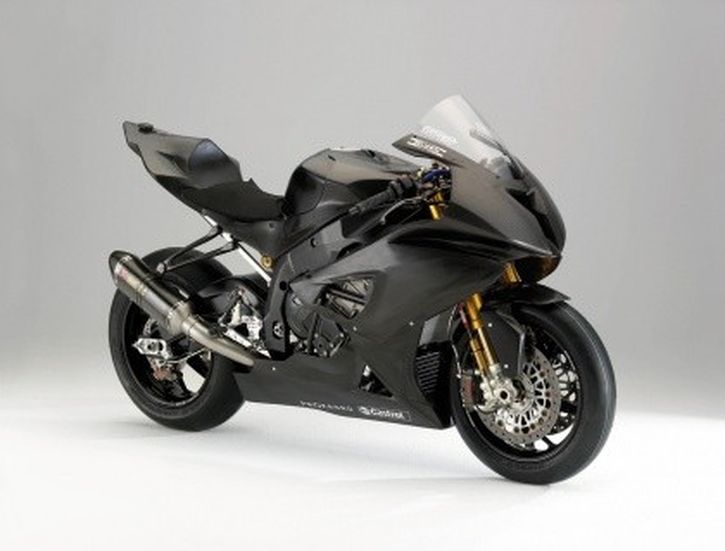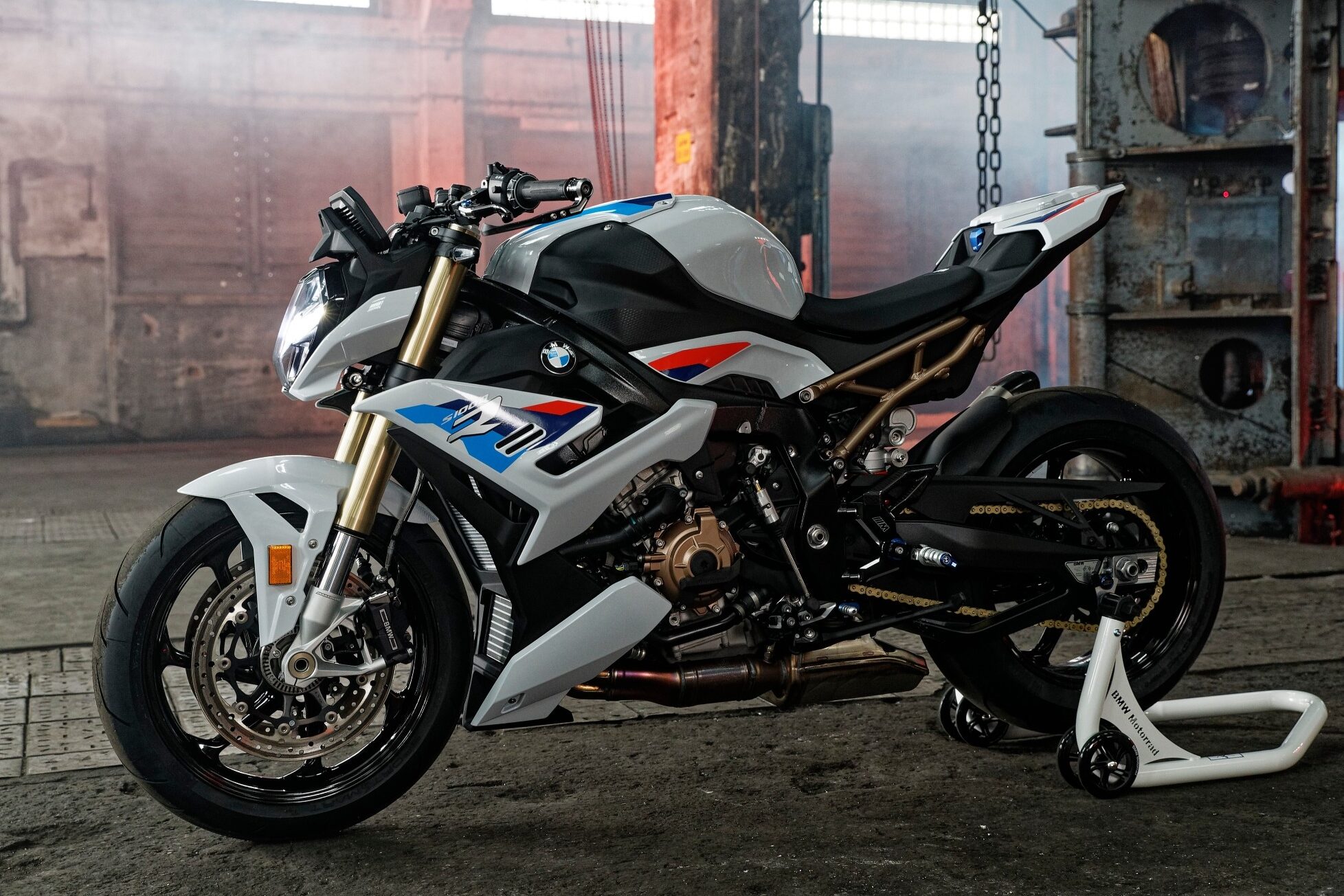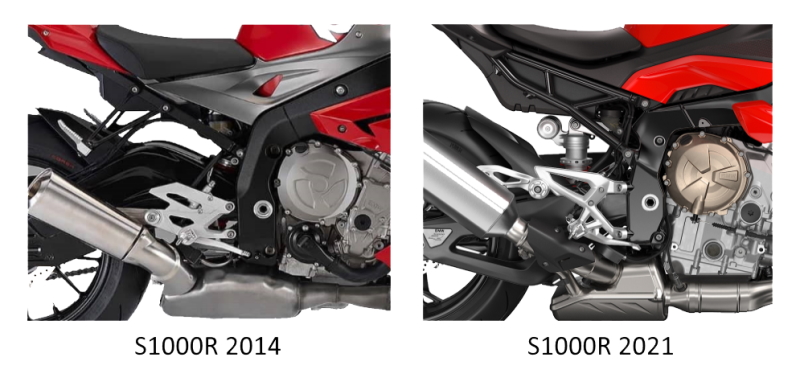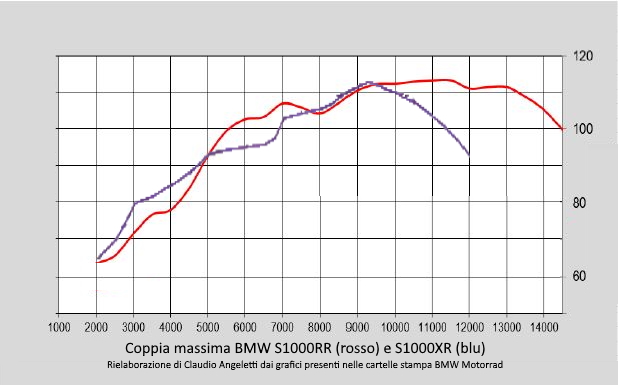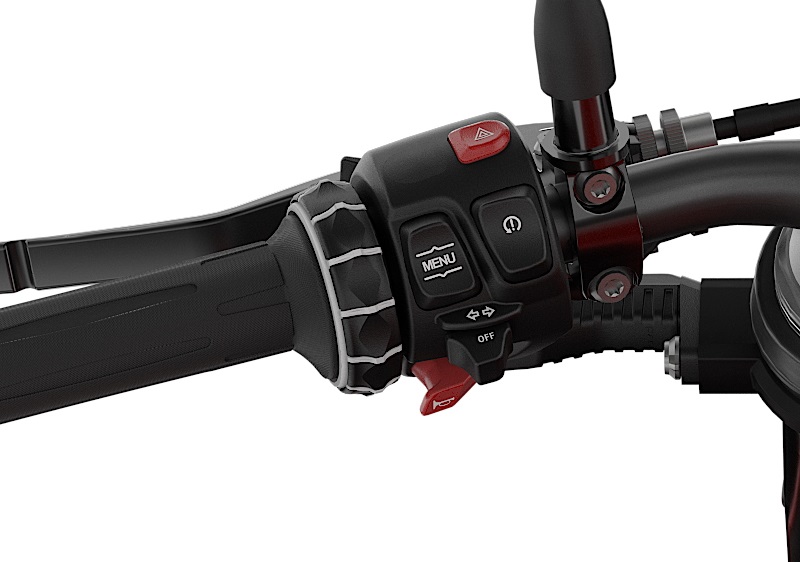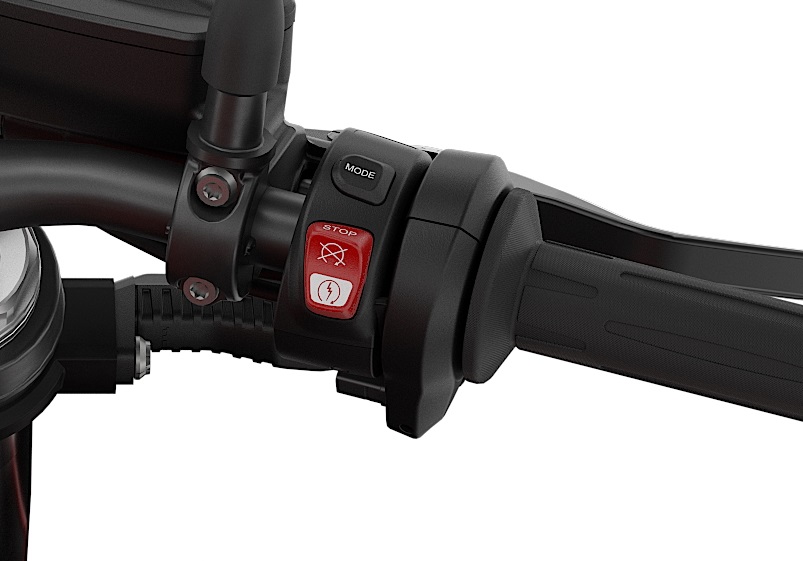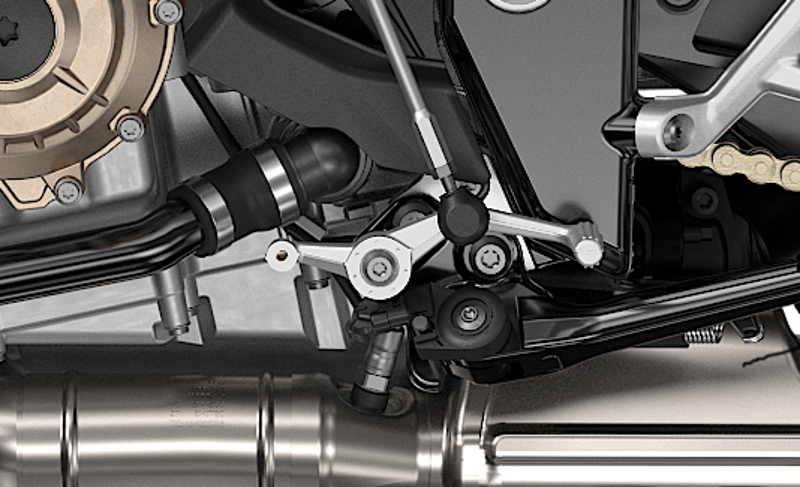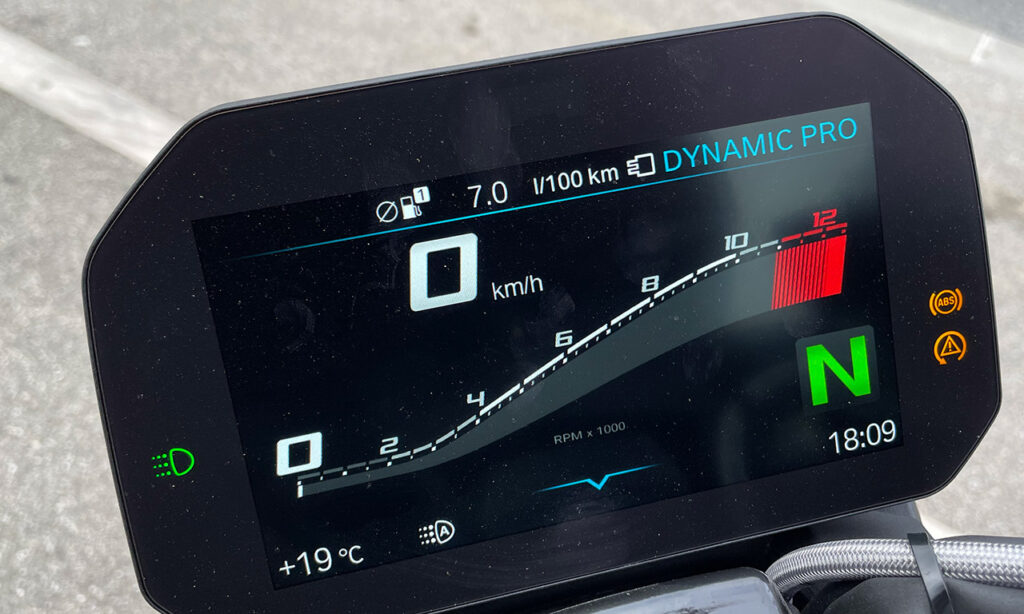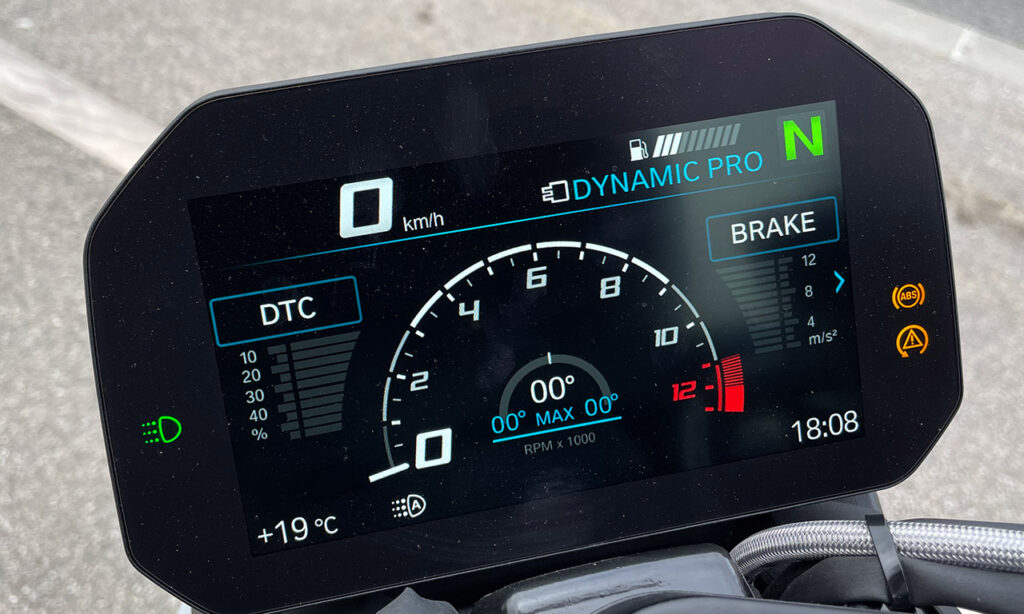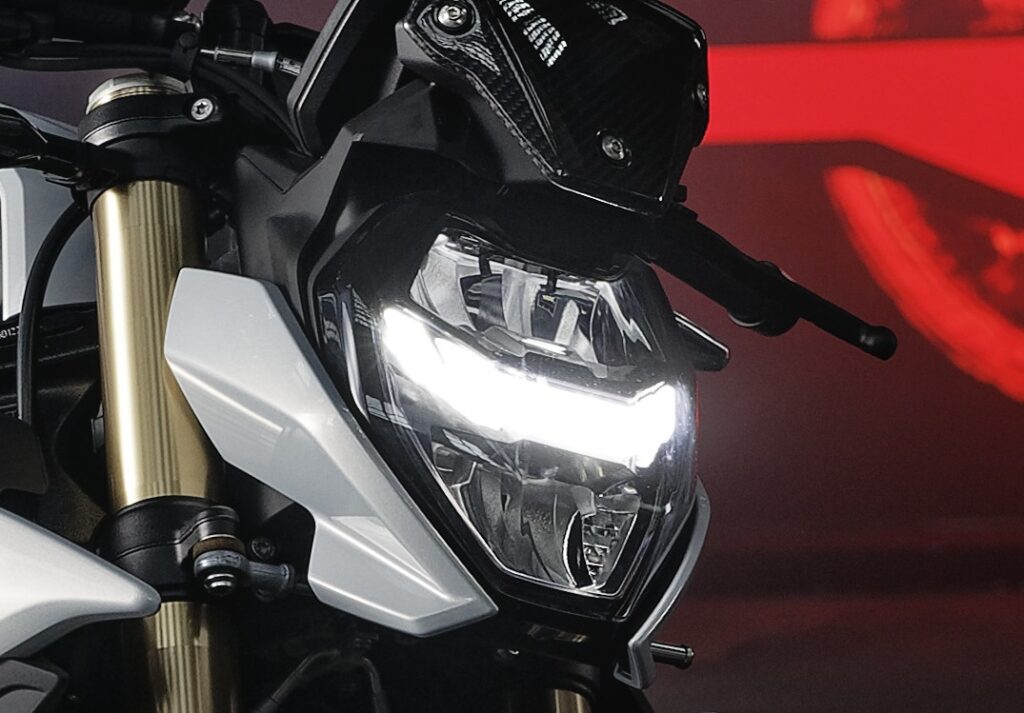Check-out our Motorcycle Tours!
The rediscovered DNA
Premise
For those who don’t know me: I’ve never been a Guzzi lover. I have obviously known the Mandello manufacturer for a lifetime―I even drove past it last summer―and I have always vaguely known that it is a manufacturer with a great past and a present full of nostalgia. The first short test I did on the Mandello a few weeks ago (link to video―in Italian) really impressed me, so I organized a more in-depth test. In preparing the review, I dug into the history of this brand a bit and, I must say, I was fascinated by it. This road test has therefore turned into a veritable little monograph in which I not only describe how the V100 performs, but also how it was created, and what it means for Moto Guzzi.

A Bit of History
Carlo Guzzi, born in 1889, belonged to a wealthy Milanese family. A passionate motorcyclist with a sanguine character and not very suitable for educational institutions, he never even managed to graduate, but he had very clear ideas. When his father died prematurely in 1906, the family sold the apartment in the city and moved to the holiday villa in Mandello on Lake Como where the young man found work in a mechanical workshop. At the outbreak of the Great War, he was enlisted as an engine mechanic in what was then known as the Servizio Aeronautico della Regia Marina (Aeronautical Service of the Royal Navy) and, after discovering that aircraft engines were far more advanced, powerful and reliable than those used on land vehicles, he was struck by the idea of creating a motorcycle with a similar power unit. With his enthusiasm, he dragged two fellow pilots into the enterprise, Giorgio Parodi and Giovanni Ravelli, chosen not only as passionate motorcyclists, but also because the former was a member of a family of entrepreneurs, while the latter was a test pilot and successful motorcycle racer, known as the Italian Devil. After the war, Ravelli died during a test flight, but his friends continued with the motorcycle project. Parodi asked for funding from his father Emanuele Vittorio, a well-known Genoese shipowner, who immediately agreed to advance half of the requested sum but wanted to see the finished motorcycle with his own eyes before giving the other half. Guzzi immediately set to work with commitment, with calculations done by his elder brother Giuseppe, an engineer, and already in 1919 the G.P. 500 (Guzzi-Parodi) was born.

This bike was so advanced―it featured a double spark, oversquare single cylinder engine with four valves and overhead camshaft driven by a bevel gear shaft!―that Parodi’s father, Emanuele Vittorio, agreed to finance its production, but only on condition that the mechanics were simplified to make it easier to produce and sell. Guzzi must have mulled it over a bit, but in the end he gave in. From the G.P. he drew the Normale―note the slight polemical vein―equipped with a standard two-valve timing with pushrod and rocker arm. In 1921 he set up the Società Anonima Moto Guzzi with the two Parodis―and two other partners wanted by them―who very chivalrously, as ‘merely financiers’ of the business, renounced the inclusion of their own name in the company name. In honor of their deceased friend Ravelli and to show their common military bond, the Eagle was chosen as the logo, it being on the coat of arms of the Navy aviators.
Speaking of the foundation, the official website of the House states that Moto Guzzi “is the oldest motorcycle manufacturer in Europe”; but, in reality, this is not entirely true. Triumph, born in 1884 as a bicycle factory, had already started building motorized bicycles in 1902 and built its first real motorcycle in 1915. However, the English brand went bankrupt in 1985, to reopen under new ownership and company name in 1990 while Moto Guzzi, which also went through various and even complicated corporate events in its long history, never went bankrupt or stopped production.
Giorgio Parodi, who would alternate the management of the company with his commitments as a military aviator until his death in 1955, wanted to spare no expense to achieve success in competitions. He realized its potential as an advertising tool, so much so that he destined the first two Normale for them. The successes soon became a distinctive element of the Mandello company which, between 1923 and 1957, collected over 3,300 victories in official sporting competitions. With such results, Moto Guzzi soon became the symbol par excellence of sportiness and modernity, and achieved ever greater success in Italy and abroad, so much so that in 1930 it became the largest motorcycle manufacturer in Europe. The drive for innovation was evident in everything: Just think, among other things, of the unforgettable racing GP500 with V8 engine and gear-driven camshafts from 1955, designed by Eng. Giulio Cesare Carcano; or the wind tunnel, strongly desired by the Guzzi brothers, built in 1950 and inaugurated in 1954―the first in the world by a motorcycle manufacturer and the first ever in Europe.
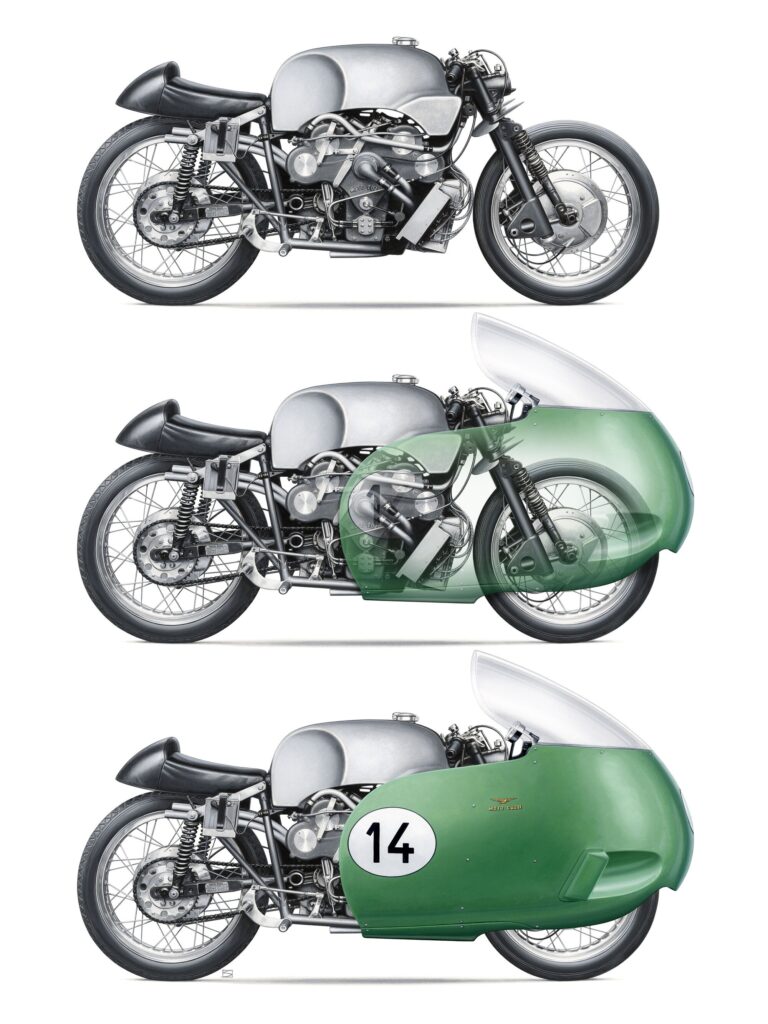

This success story took a sudden and fundamental turn in 1957 when the main Italian motorcycle manufacturers―Moto Guzzi, Gilera, FB Mondial, and MV Agusta (which eventually changed its mind)―announced their agreement to jointly abstain from sporting competitions. The decision was taken on the basis of the launch of the Fiat 600 automobile in 1955 and the 500 in 1957, whose affordable prices kicked off the automobile boom in Italy. This would certainly have caused a strong contraction in the sales of motorcycles, which until then had been the only motor vehicles that Italian families had been able to afford; therefore the three manufacturers deemed it necessary to save the considerable costs associated with the races in order to reduce prices and improve retail competitiveness. Initially, thanks to this tactic, motorcycle registrations in Italy actually continued to grow from 251,000 units in 1957 to 283,000 in 1961; but from there, they began to fall inexorably to the dramatic minimum of 55,000 units in 1970. At the same time, however, the average income of the population was increasing, so a growing number of enthusiasts began to think of the motorcycle as a great toy to have fun with in their spare time. Motorcycle sales therefore began to recover; but this new audience favored even more models that won races, so Moto Guzzi found itself caught off guard, thus leaving the door open to increasingly fierce Japanese competition.
After the death of Carlo Guzzi in 1964, the House continued to innovate production and in 1965, the brand new V7 was launched, equipped with a 700 cc transverse 90° V2 with pushrod and rocker arms and cardan shaft designed by Carcano―already author of the V8―which over the years would become the basis for a myriad of variants with even much higher displacement and is still the quintessential symbol of Mandello motorcycles. But the accounts didn’t stop getting worse, so the company was sold in 1967 to the creditor banks, which set up the SEIMM (Società Esercizio Industrie Moto Meccaniche) to manage it. During this period, Eng. Lino Tonti, coming from aeronautics and taking over from Carcano, modified the V7 to beat the speed record of its class on the track. The enterprise succeeded, but the bike was heavy and not suitable for racing, so Tonti made the much lighter V7 Sport out of it in 1971. This marked the return of Moto Guzzi to competitions, with good successes at the 500 km of Monza and at the Bol d’Or. This extraordinary and iconic motorcycle, with its particularly close-fitting and modular, straight-tubes frame, initially painted red to highlight its novelty, beat the 4-cylinder Japanese competitors for performance and outstanding chassis.
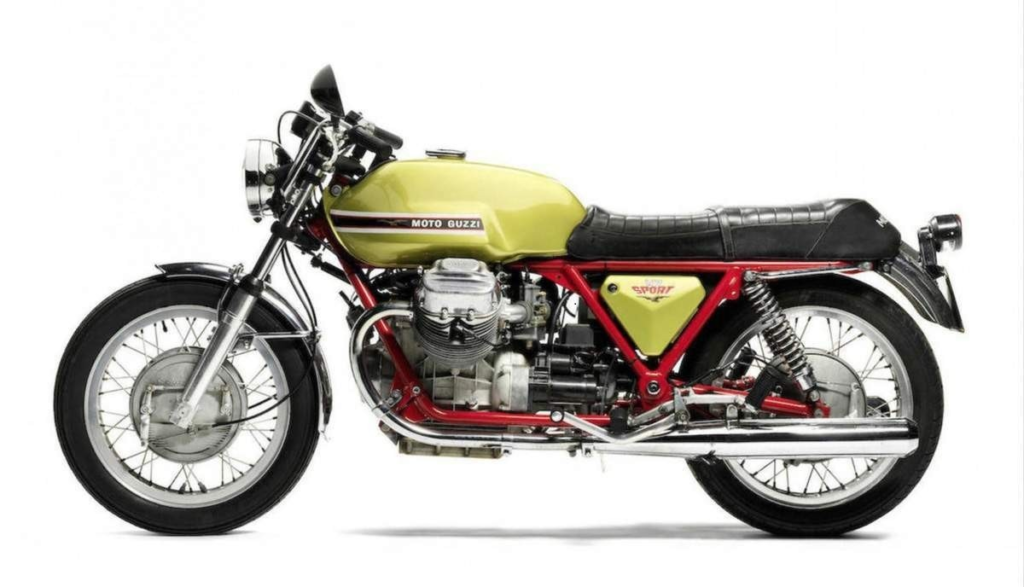
Unfortunately, however, the V7 Sport costed one-and-a-half times the price of a Honda 750, so it didn’t solve the company’s economic problems.
In 1973, Moto Guzzi suffered the setback of being taken over by its enemy Benelli, part of Alejandro De Tomaso’s industrial group. As was his habit, the Argentine entrepreneur immediately launched a bombastic renewal plan based on the rapid development―usually at the expense of reliability―of numerous new models; but, being convinced that it was necessary to imitate the Japanese models in order to relaunch the brand, he abandoned again racing and development of what would later become the 850 Le Mans, and placed the Eagle logo on the tank of in-line four-cylinder Benelli motorcycles. Unfortunately, this strategy was disastrous for sales, so De Tomaso returned to focus again on the V7 Sport, which among other things was updated with integral braking, and he restarted the Le Mans project, set new models, including the famous California cruiser, and launched a new V2 (called small block to distinguish it from its older brother) designed by Tonti and inaugurated with the 1977 V35 and V50.
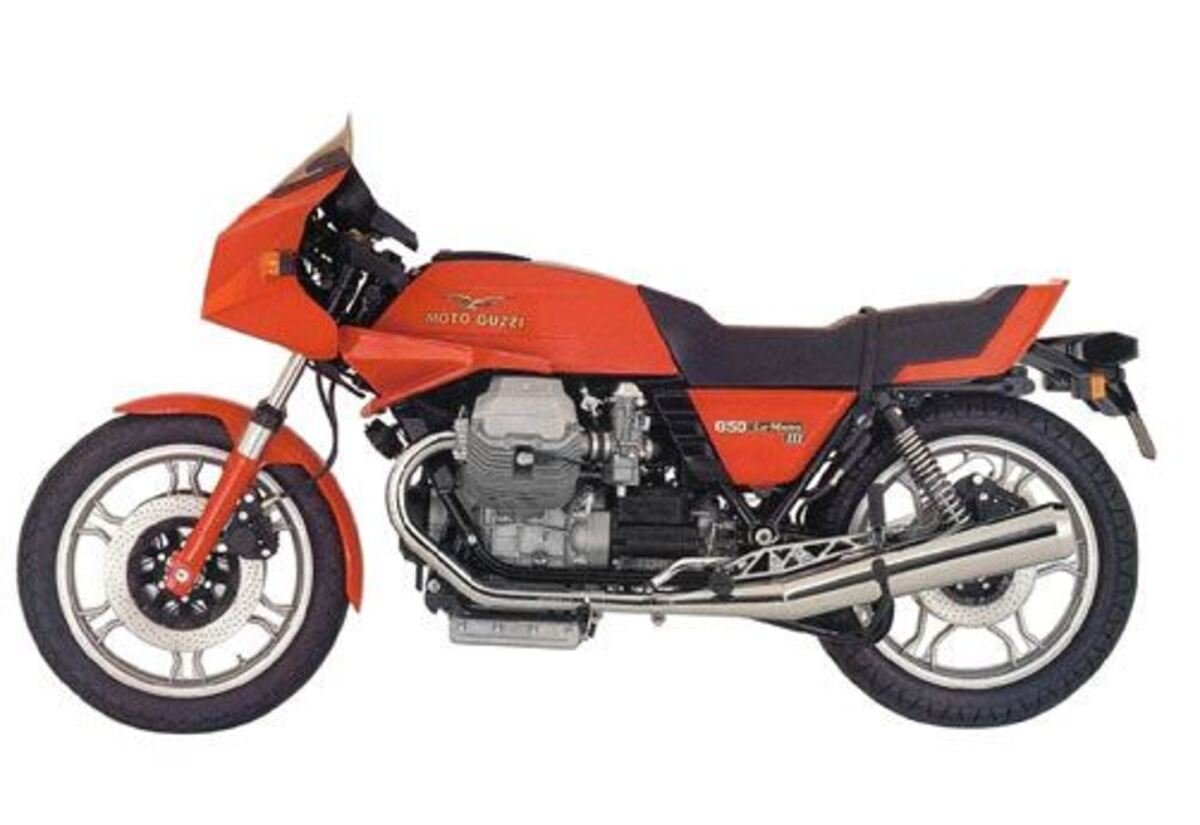
However, the accounts continued to go badly. During this troubled period, Moto Guzzi went through various mergers and acquisitions until it was sold in 2000 to Ivano Beggio, owner of Aprilia. He was moved by love for Mandello’s creatures and had the best of intentions, but the purchase helped undermine his financial stability and, in the end, he was forced in 2004 to sell both brands to the Piaggio group.
With the new management that is still ongoing today, Moto Guzzi started a phase of recovery. The new Breva V1100, Norge, Griso, and the maxi-enduro Stelvio, although based on evolutions of the old Carcano big block, were basically modern bikes that were certainly equal to their direct competitors, i.e., the BMW R with boxer engine; and this was thanks to the new Ca.R.C. (Cardano Reattivo Compatto), a double wishbone rear suspension, especially in the version with the 1200 8V engine, 4 valves per cylinder with overhead camshaft. However, their good commercial career ended between 2011 and 2016 with no model ready to replace them. The imposing and splendid 2012 California 1400 cruiser was never rewarded by sales and disappeared from price lists in 2020, so Moto Guzzi’s fortunes rested for many years largely on the shoulders of only two models: the eternal Nevada medium cruiser, which left the scene in 2016; and above all the 2008 V7 Classic. Declaredly inspired by the 1971 V7 Sport, this naked was essentially a retro version of the first series Breva―set up in the Beggio era―and as such it lacked the Ca.R.C. suspension and had the same sleepy 750cc 48bhp small block. It was a bike suited more to a turn-ups and aperitif hipster clientele than to the hard core Eagle aficionados; but that audience liked it and still does, and so we must be grateful to it because, without it, Moto Guzzi would probably have become extinct.

The 2017 V9 cruiser (equipped with a slightly modernized 850 cc and 55 HP small block that also had ride-by-wire) and especially the later and particularly well-made 2019 V85TT crossover (also with an 850 cc engine but further improved with titanium intake valves and 76 HP) won’t go down in history as signposts of technology, but they did help the V7 bring oxygen to Mandello’s coffers and allowed the technicians to work―in secret―on a new model to relaunch the Eagle, that was unveiled a few months after the centenary of the founding of Moto Guzzi with this September 2021 video.
After a gestation also delayed by the pandemic, the V100 Mandello was finally born―a totally new motorcycle with which Moto Guzzi has rediscovered its original DNA as a manufacturer of innovative sports motorcycles. I analyzed it thoroughly and I will tell you everything I discovered.
How It Is
Appearance

The look of the V100 is 100% Moto Guzzi because it clearly recalls some models from the past, reproducing the general look and various stylistic elements but, at the same time, it is very modern―to see it in the showroom next to the others models of the current range, it looks like an F35 in the midst of biplanes. It is characterized by a slim fairing culminating in a small windshield and therefore stands halfway between a naked and a sport tourer, a solution already seen in the past on, for example, the excellent Yamaha TDM. Obviously, the novelty of the line and the unconventional choice of the general setting did not fail to divide the most traditionalist category of mankind―yes, we motorcyclists―into total enthusiasts and perplexed critics. The comments of the latter range from “it’s too modern” to “they could have been more daring” passing through “it’s neither fish nor fowl” to “you can’t look at it”, and I really think that the design and marketing offices are doing a pretty tough job.
I like it a lot, both for the design itself, which is innovative and non-trivial, and because it immediately reminded me of models that I loved a lot when I was a boy, such as the 850 Le Mans III and the V35 Imola. Among the various details, I find very beautiful the horizontal full LED front light equipped with the by-now-classic running/daylight in the shape of a stylized eagle, the double-circle askew taillight similar to that of the V85TT, the short exhaust that leaves the beautiful rear rim in full view, the rounded and typically Moto Guzzi connection between the tank and saddle, and the passenger handles open at the rear. The refined design, the quality of the construction and the components, and the perfect integration of all the details are striking: Nothing is out of place and, on the whole, conveys a satisfying sensation of precision and solidity, even better than the already remarkable one of the California 1400s.
The bike is equipped as standard with a refined, electrically-controlled windscreen, of which a larger version is also available; and with the innovative adaptive aerodynamics consisting of two deflectors which, thanks to two electric motors, retract into the tank fairing when the ignition is off and emerge again upon ignition to increase protection of the legs. It is an absolute first which, not surprisingly, comes from a company that has 70 years of experience in aerodynamics. The only similar thing I know of are the flaps installed on the fairing sides of the BMW K1600 and the old K1200LT which, however, are manually adjustable.
Versions & Accessories
The bike is available in two versions, standard and S, which are distinguished by the equipment and color. The standard can be white―very beautiful in my opinion―or metallic red; while the S is supplied in two metallic two-tone pleasant liveries, one gray and green and the other in two shades of grey. There is also a special Aviazione Navale version, made in 1913 specimens―like the year of birth of the Corps in which the founders of Moto Guzzi served―and characterized by a beautiful gray livery with badges and details inspired by the fighters on board.
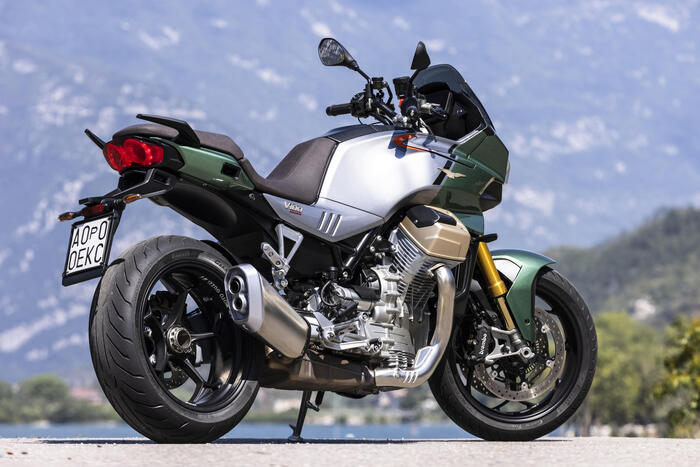
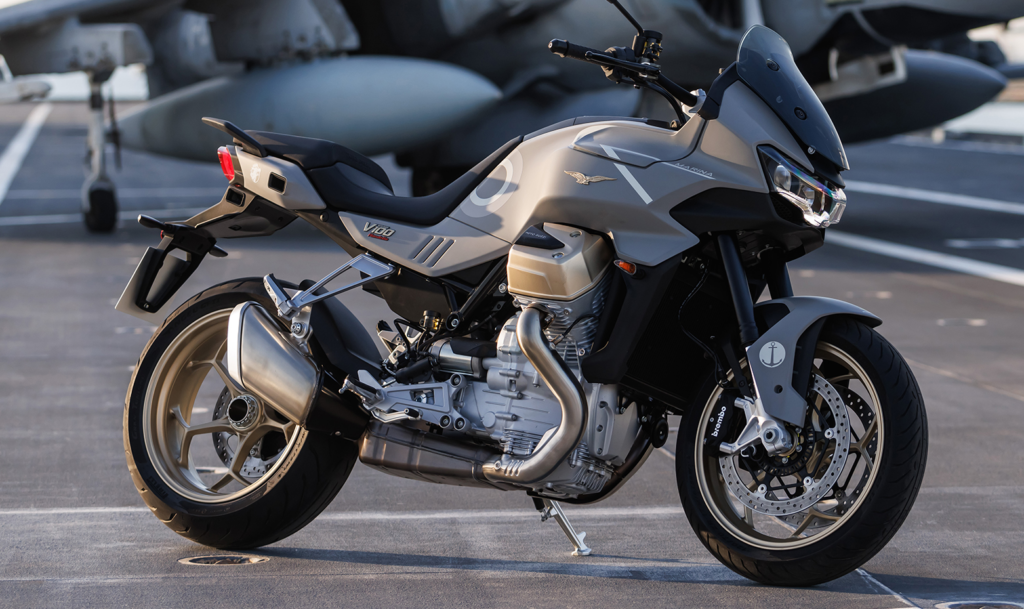
The standard version is equipped as follows:
- full LED lighting system with daylight
- corner lights
- cornering ABS
- traction control
- cruise control
- riding modes
- 5″ color TFT display
- adaptive aerodynamics
- electrically adjustable windshield
- USB socket under the passenger seat
The special Naval Aviation version also includes:
- tire pressure monitoring
- heated grips
- laser engraved serial number on handlebar riser
- commemorative plaque
- dedicated motorcycle cover.
The S version includes all the standard version accessories and the following:
- Öhlins Smart EC 2.0 adaptive suspension
- tire pressure monitoring
- heated grips
- quickshifter with auto-blipper
- Moto Guzzi MIA connectivity system, fully compatible with Android and iPhone.
The following accessories are available in aftermarket.
- Only for the standard version:
- tire pressure monitoring (standard on Naval Aviation)
- heated grips (standard on Naval Aviation)
- bidirectional quickshifter
- Moto Guzzi MIA connectivity system
- For all versions:
- side cases
- luggage rack
- top case
- central stand
- Theft Protection
- fog lights
- Touring enlarged windshield
- additional USB socket on the left of the dashboard
- paramotor
- headguard
- comfort heated high-, medium-, or low-seat
- passenger comfort seat.
The V100 is also ready to be equipped with the LCDAS system, i.e., the radar which signals the presence of objects in the rear blind spots by means of a danger symbol on the corresponding mirror and an orange area on the corresponding lower side of the instrument panel. This accessory cannot be ordered at the moment, but Guzzi promises that it will be available soon.

The sample tested was in the standard version which, in any case, already offers many accessories as standard.
Chassis
The V100 is all new and has practically no element in common with the other Guzzis. The frame is steel tubing, with the engine participating as a stressed member. The fork has upside-down stems, while at the rear there is a simple and elegant single-sided aluminum swingarm hinged directly to the engine with a lateral single shock absorber suitably inclined forward so as to ensure progressive springing without having to resort to kinematic mechanisms. The cardan shaft is housed in the single arm which, unlike on the other Moto Guzzis, is on the left and with characteristics―as we will see in the paragraph on the transmission―that have made it possible to eliminate the need for the Ca.R.C. double wishbone.
The standard version mounts Kayaba suspension, with a 41 mm fork adjustable in preload and rebound and mono as well adjustable in preload―by means of a particularly soft and well positioned knob―and in rebound. The S, on the other hand, is equipped with Öhlins adaptive suspension―43 mm Smart EC 2.0 fork and Smart TTX EC 2.0 shock absorber. Both are electrically adjustable in compression and rebound, while rear preload adjustment is always done manually with a knob. Some might not like this feature, but it offers the advantage of being able to fine-tune the adjustment based on the weight of the rider and passenger, rather than having to endure the limits of the predefined presets that the electrically-adjustable systems usually offer. In reality, it is also possible to adjust the front one, but the manufacturer recommends not touching it.
The bike has a kerb weigh of 233 kg with a full tank of 17 liters, and its main chassis dimensions are as follows:
- front travel 130 mm
- rear travel 130 mm
- wheelbase 1,475 mm
- trail 104 mm
- rake 24.7°.
The measures are those that one would expect from a tourist with sporting ambitions. The value of the wheelbase is interesting, on average shorter than most other Moto Guzzis.
The wheels are alloy with tubeless tires in the usual sizes: 120/70 ZR 17 on a 3.5 x 17″ rim at the front and 190/55 ZR 17 on a 6 x 17″ rim. The specimen tested was equipped with Pirelli Angel GT II tires, perfect for this kind of bike.
Engine
The V100 engine retains the classic transverse 90° V-cylinder layout, but otherwise has nothing to do with what was seen previously in Mandello. Characterized by a particularly modern design, it is liquid-cooled and controlled by a ride-by-wire system, has four valves per cylinder distribution with double overhead camshaft and small finger rocker arms, and has the heads rotated 90° with respect to its predecessors. Intake and exhaust are now located respectively above and below the cylinders instead of behind and in front―similar to what BMW did on the liquid-cooled boxers―to improve intake flows and increase the room available to the driver. It is equipped with a counter-rotating shaft to reduce the typical overturning torque of longitudinal shaft engines to almost zero; while the lubrication, defined as wet sump in the technical data sheet, is actually a semi-dry sump―a solution already seen on the V85TT―because the oil sump, placed in the crankcase anyway, communicates with the crank chamber only through a reed valve. In this way, lubrication on strong accelerations is improved and the formation of foam in the engine is reduced, creating a slight advantage in efficiency and therefore in consumption. The very rational design has made it possible to obtain a crankcase about 10 cm shorter than the V85TT’s small block despite the larger engine capacity, and this ensures greater roominess with the heads well away from the drover’s knees, and allows for the simplification of the swingarm seen above.
With a displacement of 1,043 cc―bore and stroke are 96 and 72 mm respectively―maximum power is 115 HP at 8,700 rpm with the limiter set at 9,500 rpm, making the Mandello the most powerful production bike in the history of Moto Guzzi; while the maximum torque, which has a peak of 105 Nm at 6,750 rpm, is high above all at medium-low revs―at 3,500 rpm 86 Nm are already available and at 5,500 there are 100―and in any case it has a very regular trend along the whole arc of use.

Trasmission
The gearbox, while using some features introduced on the V85TT to improve maneuverability, is all new and for the first time at Moto Guzzi―only on the S version and as standard―a quickshifter with auto-blipper is available. The latter can be deactivated via the menus, which is a very good thing because it allows the pilot to have fun blipping the gas when downshifting, which would be prevented by the somewhat obtuse logic of these systems.
The gear ratios are as follows:
| Gear | Ratio |
|---|---|
| Primary reduction | 1.548 |
| 1st | 2.642 |
| 2nd | 1.941 |
| 3rd | 1.550 |
| 4th | 1.272 |
| 5th | 1.083 |
| 6th | 0.960 |
| Final reduction | 3.166 |
The speeds at 1,000 rpm and when the engine begins to pull vigorously and express maximum power are as follows.
| Gear | Speed @ 1,000 rpm | Speed @ 4,000 rpm | Speed @ 8,700 rpm |
|---|---|---|---|
| 1st | 9.3 | 37.3 | 81.2 |
| 2nd | 12.7 | 50.8 | 110.5 |
| 3rd | 15.9 | 63.6 | 138.3 |
| 4th | 19.4 | 77.5 | 168.6 |
| 5th | 22.8 | 91.0 | 198.0 |
| 6th | 25.7 | 102.7 | 223.4 |
The very wide range of use and the relatively short ratios―the maximum speed practically coincides with the maximum power regime―make it possible to travel almost always in sixth gear with great smoothness, also with lower consumption.
The wet multi-plate slip clutch is also outside the classic Moto Guzzi schemes and is operated by a highly refined radial pump symmetrical to that of the front brake.
The transmission shaft has a single cardan joint at the gearbox outlet, as per the tradition of the House; and it is hinged lower than usual and is particularly long, possible only because of the remarkable compactness of the new engine. Thanks to these features, and despite the absence of the Ca.R.C double swingarm, the Moto Guzzi technicians have obtained a behavior similar to that of motorcycles with chain transmission―i.e., without extension of the suspension under acceleration.
Brakes
The V100 is equipped with two 320 mm front rotors with Brembo four-piston radial calipers actuated by a radial pump through steel braided pipes; while at the rear, there is a 280 mm rotor with Brembo two-piston floating caliper. The braking system is a standard two channel and ABS with cornering function that is standard on both versions.
Advanced Driver Assistance Systems (ADAS)
From the point of view of electronic driving aids, the Mandello is equipped as standard with a 6-axis inertial platform and offers the following functions in both versions:
- Cornering ABS―anti-lock braking system with rear wheel lift control and Cornering function which reduces the initial braking power at the front when the motorcycle is leaning, and serves to limit as much as possible the effects of too abrupt an operation of the front brake when cornering
- TPMS (Tire Pressure Monitoring System)― available only on the S version
- MGQS (Moto Guzzi Quick Shifter)―quickshifter with auto-blipper, with the particularity[?peculiarity?] that the auto-blipper intervention can be deactivated from the menu
- Cruise control
- Riding modes―the four are: Sport, Road, Touring, and Rain; and they act on the following four systems:
- MGCM (Moto Guzzi Engine Control)―system that varies engine delivery in relation to the position of the throttle
- MGCT (Moto Guzzi Traction Control)―anti-skid system that takes into account the lean angle of the motorcycle
- MGCA (Moto Guzzi Aerodynamics Control)―sets the operation of the flaps located on the sides of the tank, which can remain always closed or always open, or can swing open when a set speed is exceeded
- MGCS (Moto Guzzi Suspension Control)―only on the S version; it acts on the semi-active Öhlins suspension which provides the following modes:
- Automatic Dynamic―the suspension automatically adapts to the route and driving style
- Automatic Comfort―like the previous one, but softer
- Manual Dynamic―suspension behaves as if it were non-adaptive
- Manual Comfort―like the previous one, but softer.
Controls
The handlebar controls are classic, well made, and offer a nice feeling.

On the left block there are:
- on the front side, the light switch, of the type that you pull to flash and push out to switch to high beam
- the traditional-type control of the turning lights, equipped with automatic shut-off on movement, which occurs after 500 m or 40 s.
- The button for the horn―the usual scooter-like sad thing, unfortunately almost universally widespread―placed correctly under the command of the turning lights (I hope they read me in Honda)
- the four classic keys for navigating the menus, the left of which (Mode Set) is used only to confirm and the others to scroll through the menus
- above, the standard cruise control slider which, after reading the manual―not because it’s complicated, but it’s different from the BMW system I’m used to―turns out to be very functional. Note that, unlike on other bikes, here it is not possible to interrupt the automatic adjustment by blipping the clutch because, to do this, you really have to pull it all the way. Always used to doing this (badly), I risked the sin of sodomy with a truck.
When cruise control is off, the same command can be used to change traction control settings on the fly from any screen.
The Mode Set key on the keypad also provides quick access to power windshield adjustment using the up and down navigation keys.
On the right block are:
- the rational rocker button for engine start and kill switch
- at the bottom, the key to change the riding mode
- at the top, the button for switching between day and night lights―which in any case can be set as automatic using the menu―and, with a long press, to activate any optional fog lights.
The keyless system is not foreseen on the S either, which considerably increases my already high esteem for the Mandello, given that, as my readers know by now, I consider this system only a source of useless complications. On the other hand, the button for the hazard lights is missing; but it is possible to set them to automatically switch on during emergency braking, and their activation is always triggered in any case of serious failure which involves the risk of the motorbike suddenly slowing down.
Display
The V100 is equipped as standard with a beautiful 5″ color TFT display housed in a frame containing various basic warning lights: immobilizer/gear shift RPM, direction indicators, ABS, cruise control, high beam, engine failure, traction control, reserve, and neutral. Navigation is carried out using the four keys on the left block with the following screens available.
Standard View

Dedicated to driving, it is pleasant and shows everything you need to know in a single glance:
- digital speedometer
- analog tachometer
- fuel level
- water temperature
- gear engaged
- riding mode active
- Now
- ambient temperature
- when cruise control is active, the set speed
- when the fuel reserve is reached, the remaining autonomy
- open side stand light
- a myriad of other warning lights and indicators for all the various standard and optional accessories
The lower area is intended to house alarm messages and indications of various kinds, while a large area on the left is dedicated to the following tabs, which can be accessed by pressing the right key:
- two travel diaries separately resettable
- heated grips setting (if present)
- heated rider seat setting (if present)
- tire pressure (if the MIA system is present)
- Information relating to telephone calls (if the MIA system is present)
- Information relating to music tracks (if the MIA system is present)
- Different information relating to the multimedia system (if the MIA system is present)
In turn, the travel diaries allow, by pressing the up and down keys, to alternatively view the following data:
- total odometer
- trip odometer
- travel time
- full speed
- average speed
- average consumption
- instant consumption
- distance traveled in reserve (only with reserve warning light on)
- setting of the MGCT (Moto Guzzi Traction Control)
Navi View

The Navi screen, available only if the MIA multimedia system is present, is similar to the standard one and includes all the important information and the lower and left information areas of the standard screen, but has smaller digital speedometer and gear position indicator to make room for graphical indications of the next turn, the current speed limit, and the next turn—info taken from the GPS app of the smartphone. Other information appears in the lower bar―name of the road traveled and north direction, while the destination address can be retrieved from the tabs in the left area.
Launcher Menu

From this view it is possible to access the various menus available:
- Vehicle
- Service
- Dashboards
- Riding Modes
- Multimedia (only if the MIA system is present)
- MGCS (Moto Guzzi Suspension Control), only on the S version.
Each menu has personalized graphics with an image of the system to which each item is dedicated, and everything is really pleasant and well done.
Vehicle

It includes:
- Headlamp mode―sets automatic or manual switching from daytime to night lights
- Shift light―selects the speed at which the gear shift warning light comes on
- MGQS down (only if the quickshifter is present)―activates or deactivates the auto-blipper
- Emergency brake―sets the automatic activation of the hazard lights on or off in emergency braking
- Calibration―allows you to recalibrate the traction control if different types of tires are installed
- Rear radar―turns the radar on or off, if equipped
Service

It includes:
- Change user code―sets the personalized unlock code in case of immobilizer failure
- Code recovery―restores the factory code if the code has been forgotten
- Windshield―selects the maximum operating speed of the electric windshield (130 km/h for the standard windshield and 110 km/h for the Touring)
- other items relating to the software and reserved for assistance
Dashboard

It includes:
- Backlight―adjusts the backlight of the display
- Clock―adjusts the time and select the format
- Units―sets the units of measure for speed, consumption, temperature, and pressure separately
- Language―sets the dashboard language to Italian, French, English, German, or Spanish
- Riding modes language―sets the language of the riding mode names to either Italian or English
Riding Mode

It allows you to customize the four systems included in each of the four riding modes, choosing from the following settings:
- MGCM (e-gas) – 1 = aggressive 2 = medium 3 = smooth
- MGCT (traction control) – 1 = off 2 = minimum 3 = medium 4 = maximum
- MGCA (retractable flaps) – Off = always closed On = always open On-km/h oppen at a freely set speed
- MGCS (adaptive suspension) – A1 = Automatic Dynamic A2 = Automatic Comfort M1 = Manual Dynamic M2 = Manual Comfort
The factory settings of these systems are as follows.
| Riding Mode | MGCM (e-gas) | MGCT (traction control) | MGCA (retractable flaps) | MGCS (suspension) |
|---|---|---|---|---|
| Sport | aggressive | minimum | closed | Automatic Dynamic |
| Strada | normal | medium | closed | Automatic Dynamic |
| Turismo | normal | maximum | open from 60 km/h | Automatic Comfort |
| Pioggia | smooth | medium | open | Automatic Comfort |
The decision to set the traction control of the Rain mode to the medium level rather than the maximum appears curious.
Multimedia

Present only if the bike is equipped with the Moto Guzzi MIA system, it includes:
- Device status―list of associated devices
- Device pairing―pair a device
- Reset pairing―reset all device pairings.
MGCS

Present only on the S version, it allows you to set the different parameters of each of the four modes available for the suspension.
- In Automatic Dynamic and Automatic Comfort―the adaptive modes―three parameters are available: front damping, rear damping, and fork support under braking, adjustable on a scale from -5 (soft) to +5 (firm)
- In Manual Dynamic and Manual Comfort, the non-adaptive modes, it is possible to electrically adjust the front and back hydraulic brakes in compression and rebound on a scale of 1 (hard) to 31 (soft).
The factory settings of the suspension parameters are as follows:
| Parametro | Automatic Dynamic | Automatic Comfort | Manual Dynamic | Manual Comfort |
|---|---|---|---|---|
| Front damping | 0 | -5 | – | – |
| Rear damping | 0 | -5 | – | – |
| Fork support under braking | 0 | -5 | – | – |
| Front hydraulic compression brake | – | – | 28 | 31 |
| Front hydraulic rebound brake | – | – | 5 | 20 |
| Rear hydraulic compression brake | – | – | 30 | 31 |
| Rear hydraulic rebound brake | – | – | 10 | 15 |
Lighting
The V100 features a full LED lighting system with cornering lights as standard to improve visibility along curves. They work with a different logic from what I’ve seen on other brands because they have only one spotlight on each side instead of the usual three, and they come on only when the bike leans more than 25° rather than almost immediately. Given that these lights are usually quite dim, it makes me think that Moto Guzzi has paid attention to the point and has foreseen this as a more effective aid only when it is really needed, and that is precisely when you lean a lot and the headlight points too much towards the external edge of the road. Unfortunately, I didn’t have the opportunity to check it because I rode in the city in the evening where public lighting doesn’t allow you to check; and, while in the garage, I had no chance to reach the necessary inclination. Anyway, the low beam and high beam work very well.

As with many motorcycles, the V100 does not feature a quick system for adjusting the height of the headlight beam according to the load. The low beams are adjusted individually using two screws located under the dashboard, while the high beam is adjusted with a screw located under the fairing. It is therefore important to adjust the preload when riding with a passenger, an operation made very simple by the presence of the handy wheel.
Driving position
The riding position is comfortable and much more for a naked than a sport tourer, with the handlebars wide and open enough, the torso slightly leaned forward, and the footrests well distanced from the saddle and moderately back. The saddle is quite comfortable and allows the greatest freedom of movement for the rider.
There is no lowering kit, nor is there a seat height adjustment. The heated comfort saddle, available only in the aftermarket, can be activated through the menus and is available in three different sizes. The possible seat heights are as follows:
- low comfort saddle 800 mm
- standard saddle and medium comfort saddle 815 mm
- high comfort saddle 835 mm
The mirrors are good and well spaced, at a height that does not interfere too much with those of the cars; they do not vibrate noticeably; and they allow a good view. If the rear radar is present, they show
the danger indicator, besides the one appearing on the LCD display.
Passenger
The passenger sits on a separate saddle that is sufficiently wide and comfortable – but not heated; has a nice pair of comfortable handlebars and footrests that are a little higher than those of the rider, but which nonetheless allow for a comfortable position.
Load Capacity
The V100 is also designed to travel two up and can be equipped on request with dedicated two-tone light and dark gray 30- and 29-liter rigid panniers, beautiful and well integrated with the line of the bike, which can bel installed directly without the need for frames, and they are locked with the ignition key. Also available is a 37-liter two-tone top box that requires the purchase of a specific luggage rack. This is certainly robust―the homologation is for 12 kg―but not beautiful or up to par with the rest of the bike; and it also causes a top case position that is slightly too raised.

There is also a (very) small storage compartment under the passenger seat, which is equipped as standard with a USB charging socket.
Check-out our Motorcycle Tours!
How It Goes
Engine
The new DOHC starts promptly and without the usual transverse shaking typical of the other Moto Guzzis, with a very regular idle around 1400 rpm. When the throttle is opened, it revs rather rapidly and has almost no overturning torque, thanks to the anti-torque countershaft and the general work of reducing inertia. Furthermore, it is completely devoid of parasitic noises due to pushrods and rockers or other; while the exhaust is civil, it always lets you hear the beautiful note typical of the V2. In short, this twin-cylinder definitely sounds like a Moto Guzzi, but it seems to be made by Honda—and when speaking of engines, I couldn’t come up with a better compliment.
On the move, the V2 easily accepts turning at very low revs, so much so that it is possible to accelerate in 6th from 40 km/h (corresponding to approximately 1,550 rpm) at full throttle, of course with many vibrations; and already from[up around] 50-60 km/h (around 2,000 rpm), it becomes smooth and starts pulling satisfactorily.
In acceleration, the engine offers a consistent and regular thrust starting from 2,000 rpm, increases progressively without leaps, becomes noticeable already at 4,000 rpm, and remains so up to the maximum power regime beyond which it is decidedly not advisable to go because the torque fades immediately, even though the engine would continue to rev without any increase in vibration. We are not talking about an arm-stretching motorcycle, but there is enough power to have a lot of fun and not suffer from an inferiority complex towards anyone else on the road.
The throttle response varies significantly between the different modes, from gentle in Rain to quick in Sport, and is always perfectly suited to the situation. The different driving modes do not affect the engine torque.
The test took place in January with temperatures at or below 10 degrees Centigrade, so I could not detect any heat problems.
Acceleration
The V100 surprises because, in terms of sensation, it clicks much better than any other production Moto Guzzi I’ve tried before. I am certainly not referring to the V85TT, and much less to the V7 and V9 (the comparison would be merciless), but to the Griso 1200 8v, which was the lightest of the bikes equipped with the most powerful big block ever (110 HP), but despite this, it gave that sensation of inertia from large flywheel masses typical of the company’s V2s, which is completely absent in the V100.
The start is immediate, thanks to the short first gear, the smooth clutch, and the well-distributed torque; and the bike continues to accelerate vigorously in all gears, which are spaced perfectly evenly. Obviously, we are not at the levels of a super sports bike―the power-to-weight ratio is about half that of a 1000 cc race replica―but the V100 behaves very well against competitors of equal, and even higher, displacements because, when you open the throttle wide, you get enough response to have a lot of fun while experiencing the gratifying sensation of not having to survive by being hung up on electronics which, in any case, are discreetly present to prevent wheelies in first gear.
I did the acceleration tests in Sport, but I think the results would have been almost equivalent in the other modes as well.


The V100 reaches 100 km/h from a standstill after 4.28 s and 63.1 m and 200 km/h after 15.07 s and 554.5 m. The absence of the quickshifter does not worsen too much the shifting―around 0.3 seconds, given the promptness of the gearbox; but it has an impact on 0-100 time because the shift into second takes place at around 80 km/h. I am therefore sure that even better figures can be achieved with the S. On paper, these times might not seem particularly exciting to someone since you can generally read calculated numbers that have no basis in reality; but I guarantee that they are definitely adequate―the sensation is that of a very lively bike.
Pick-up in 6th Gear
The relatively short 6th gear of the V100 (25.7 km/h at 1,000 rpm) and the regularity of the torque allow the V100’s top notch pick-up capability. Furthermore, the engine’s ability to turn even at very low revs allowed me to carry out the test in the higher ratio, opening the throttle even from 40 km/h, corresponding to 1,560 revs/min, i.e., slightly above idling speed, a performance worthy of a 4 cylinder. In this case the vibrations are obviously evident, but the engine picks up again without any hesitation and, already starting from 50 km/h, it starts to turn nicely round and to push with increasing determination.
The passage from 40 to 120 km/h in 6th takes place in 9.63 s, an excellent time for a tourer, not only with respect to the engine capacity, but in absolute terms, practically identical to the already excellent one achieved by my K1200GT and close to the 8.8 s obtained with the 6-cylinder K1600. In practice, all this means that the V100 moves on the road with the smoothness of the big tourers―that is, it travels well even when fully loaded, and allows most passing to be done without having to downshift.

Trasmission
The wet clutch is relatively soft, perfectly modulable, and resistant to overwork―with the radial master cylinder making a big splash, but not bringing obvious advantages.
The stock gearbox is perfect: very precise and with a short stroke. The sample tested did not have a quickshifter, so I can’t comment on that. The very regular spacing between the gears allows you to always have the right gear for every need. In particular, when you’re in 6th gear and you want to overtake very quickly, you just need to downshift one gear to get a lot more thrust, which is not entirely obvious on other bikes. For example, on the mighty 6-cylinder K1600, which has very closely spaced 5th and 6th gears, if you want to overtake particularly fast, you had better downshift to 4th.
The final shaft drive has no noticeable backlash, is perfectly silent and works flawlessly. I can confirm that it behaves like a Ca.R.C. or a BMW Paralever double wishbones, but with a disarming constructive simplicity, really well done.
Brakes
The braking of the V100 is prompt, powerful, resistant, perfectly modular, and above all, extremely effective, also thanks to the certainly rather low center of gravity and the not particularly short wheelbase –features that reduce the tendency of the rear wheel to lift. The figures are record-breaking: the Mandello stops from 120 km/h in 3.63 s and 64.40 m, leaving even a naked shooter like the BMW S1000R, which needs 3.95 s and 69.0 m respectively.



However, the ABS is calibrated in a rather aggressive way because it allows an impressive maximum possible deceleration―on average around 1 g!―and only in emergency braking does some slight fishtailing of the rear wheel occur which, in any case, does not cause worry.
The ABS works very well and there is no forward motion feeling. The cornering function minimizes imbalances in the set-up when braking hard along a curve. If the front brake is applied decisively when cornering, the ABS intervenes well in advance of the actual loss of grip, drastically limiting the front braking power in the very first moments, and then gradually makes greater deceleration possible. In this way the start of braking when cornering is always made very progressive, as if the lever were pulled slowly rather than abruptly, all to the advantage of stability.
Steering & Attitude
The steering of the V100 is impeccable: precise and prompt as one could wish for, and never fatiguing.
The Kayaba upside-down fork of this standard version is very smooth and well supported even under the most violent braking, while the shock absorber in the standard setting is perhaps a little stiff―at least for the back of this splendid 57-year-old!―but it improves by acting on the adjusting screw. If you live in a bumpy roads area, you better choose the S version with Öhlins adaptive shock absorbers, In any case, the bike moves homogeneously, without imbalances between front and rear, and the excellent control of the suspended masses makes the Mandello very effective and reactive in sports riding.
Downtown
The V100 is not very light on the scales, but the low center of gravity, the relatively short wheelbase (compared to the average Moto Guzzi), the fairly wide handlebar, and its compact dimensions make it very agile and easy to handle in town. It is also quite slim and this facilitates the vertically challenged, who still have the option of buying the lower seat. The highly manageable engine―even in Sport mode―and the smooth clutch complete a great picture, which would be excellent if the suspension better absorbed the deep bumps.
On Highways
The V100 is a rather comfortable bike, thanks to the relaxed engine speed―at 130 km/h in 6th the engine is at 5,000 rpm―to the absence of annoying vibrations, to the very natural riding position, to the comfortable seat, and to the suspension―a little stiff on this standard version, but satisfying nonetheless. The aerodynamic protection offered by the slim fairing is good. Raising the windshield obviously increases it, and the air flow that reaches the helmet always remains perfectly smooth. For those who still want more, it is also possible to mount the larger Touring windshield. The adaptive flaps have no effect on the chest and head and therefore their action is less conspicuous, but once open they protect the upper part of the legs well and are particularly useful in wet weather.
On Twisty Roads
Relatively short wheelbase, strong and always available torque at the wheel, ready and easily manageable throttle, effective gearbox, superb brakes, prompt and precise steering, and excellent control of the suspended masses give the V100 a rather sporty behavior even on very twisty roads, a particularly interesting result, because combined with a good level of comfort. The guide is really tasty and makes even the most savvy riders smile in their helmets.
Fuel Consumption
Consumption at constant speed measured by the on-board instrument are as follows:
- at 90 km/h 21.5 km/l
- at 130 16.5 km/l
The overall average from top to top, including some downtown, some highway, a lot of highways and much fast pace―including acceleration tests―was 16.2 km/l.
Conclusions
The V100 Mandello is an excellent sport tourer that offers a lively engine with flawless operation and a more than reasonable fuel consumption, very interesting performance for the category and in particular an excellent pick-up in 6th gear, great maneuverability on all kinds of roads, stunning braking ability, space on board adequate for two and for luggage, good comfort even at highway speeds, and well made electronics that are easy to use.
But the thing that impressed me the most is the build quality of the whole and of all the details. On the Mandello there is not a cable or screw out of place, an imprecise joint between panels, a less than excellent finish; all the components are perfectly integrated and everything conveys a gratifying sensation of precision and solidity in use, even in particular insignificant ways, such as the feel of the various buttons and plastics or the flawless opening of the fuel cap or the ease of removing and, above all reassembling, the saddles. In a nutshell, the V100 offers, even in this standard version, the refined components and charm of Italian motorcycles combined with construction worthy of the best Hondas―and I really couldn’t wish for anything better.
Ever since I was a boy, I have always seen Moto Guzzi scrambling to pursue the competition and maintain the greatness of its past. Here, with the V100, the House of the Eagle has finally achieved both objectives with impetus because, in my opinion, this is one of the best sport tourers on the market and makes an epochal leap compared to the rest of the Mandello production. To find an equally innovative motorcycle in the history of the House, you have to go back at least as far as the 1965 V7. Hats off to the Mandello technicians for this masterpiece! I wish them every success in sales, and I look forward to seeing and testing future models with the same engine.
Pros
- Beautiful, solid, and well finished bike
- Space for passengers and luggage
- Pleasant, powerful, and very elastic engine
- Excellent brakes
- Flawless gearbox and clutch
- Nice drive on all the routes, even raising the pace
- TFT dashboard that offers all the necessary information at a glance
Cons
I really struggled to find one, but in the end I succeeded: The design of the optional tubular luggage rack is not up to par with everything else on the bike
Many thanks to the Moto Guzzi―Aprilia―Piaggio dealership “Che Moto!“ of Rome for having made the bike available for the test.

